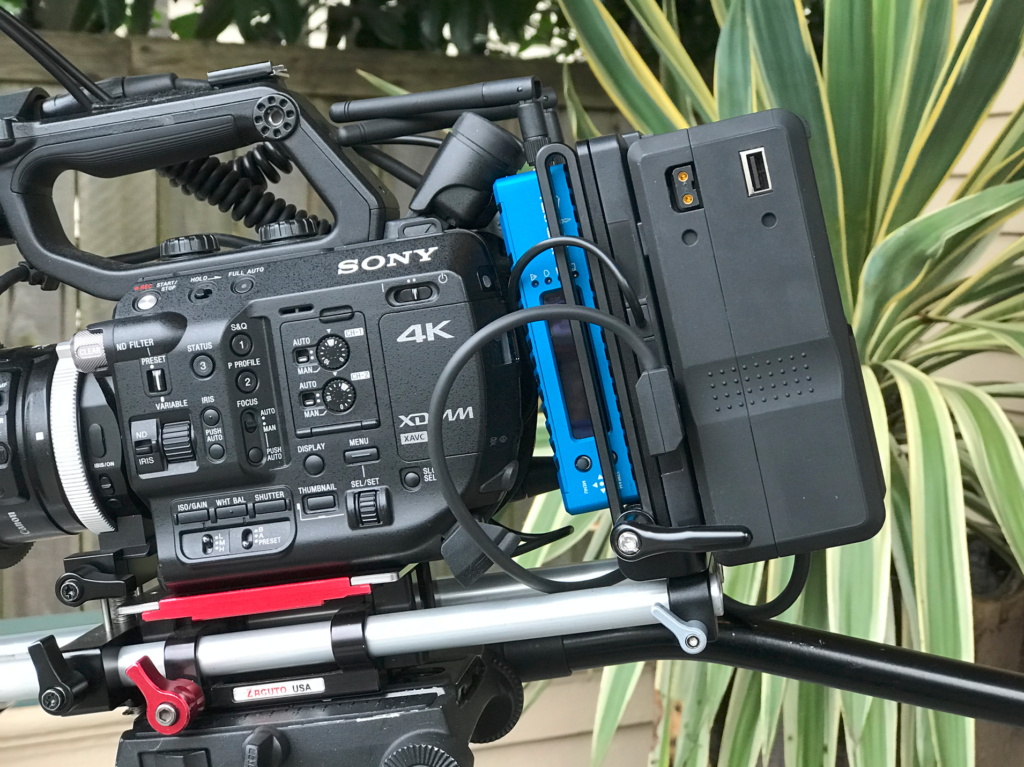For smaller documentary film productions, a client monitor is a luxury that’s rarely on the table. Not only are they expensive, but they are complicated. First, you need to set up a radio network, and then, a monitor. It’s expensive, and time consuming.
But Teradek has changed that equation with the Serve Pro, a small camera-mountable box that creates a wi-fi network that up to 10 iOS or Android devices can use to monitor video. It’s been a game-changer for me and my clients. Here’s why it’s my new favorite tool on location.
I’m often shooting projects where up to three client representatives are on location. Client reps like to have something to do when they are there, besides just watching you work. But they also need and want to stay out of my way. On larger sets, they are usually clustered around the monitor. So what Serve Pro does is give them that experience, the opportunity to see what’s going on, and provide you feedback if they want, based on an image they are seeing on their phone or tablet.
I was skeptical at first that the quality would be that good – I imagined having to spend time disclaiming the image, telling them that it would look better in post. But that turns out not to be the case. Not only is the image top-notch, but I find that it’s as good or in some cases better than the image coming to my Shogun and SmallHD monitors if you have an iPhone 7 or newer.
HD video monitoring with professional controls
Not only is the image bright and sharp, but all of the controls that you would expect to find on a SmallHD monitor are included in the free Vuer app! You read that correctly: you can apply a LUT, view peaking or zebras, even false color if you want. You can look at a vector scope, histogram, etc. But clients generally just want the image to look good. And Serv Pro has that covered, too.
I generally shoot in Slog, so I just email my clients a LUT before the project, then show them how to load it into the app on the morning of the shoot. It takes just a few clicks, and boom, the image they are seeing looks fantastic, as I send them a LUT that is designed for client viewing with slightly crushed blacks.
Shogun’s problem and solution
When I first started shooting with a Shogun Inferno, I was disappointed to find that I couldn’t get an HD signal out of the Inferno when shooting RAW. So that pretty much meant I couldn’t use the Serv Pro. But the latest firmware (version 9 that also supports ProRes Raw) has fixed this issue! So now it’s possible to record raw to Shogun Inferno AND send an HD signal out to the Serv Pro.
Mounting the Serv Pro to camera
It’s possible to attach the Serve Pro to the camera using 1/4 holes that are drilled into the unit in two places. But what I’ve found works great for me is to attach two strips of velcro, and use that to mount to the flat back of a battery plate. This doesn’t cause the unit to overhead, and works great to keep a low profile on the camera while shooting.
Battery life
It’s possible to power the Serve Pro from a smaller battery with a p-tap, but I find that using full-size vlock batteries is the way to go. A 98wh battery will power my camera, Serve Pro, and Shogun 2.5 hours.
The Serv Pro costs $1,800. I rent it to my productions for $105/day. My clients love it so much they call me before shoots to make sure I’m brining it. So it’s become a standard line-item in most of my productions, and I will have it paid off by the end of the year.
You can rent my Serv Pro and check it out for yourself! My kit, which includes HDMI, SDI and power cables in road case as pictured above, is available on ShareGrid for $105 for the day or weekend for productions in the Seattle area.
Rent my Teradek Serv Pro on ShareGrid for $105.
Do you provide monitoring for your clients?

